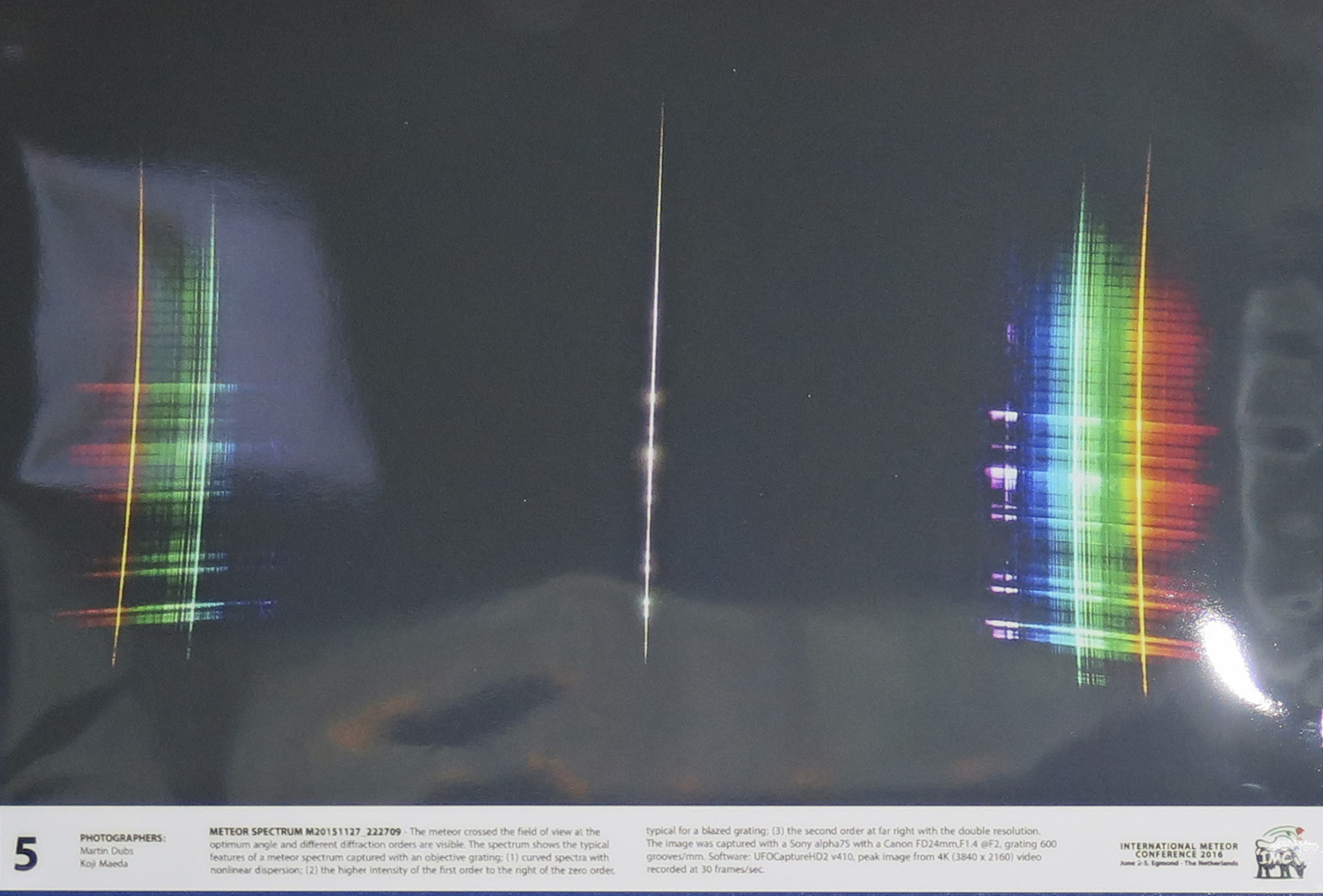
Spectroscopy allows one to tease apart the light of a luminous object and determine interesting things
about it; its composition, temperature, and so on. This is as true for meteors as it is for stars and
other astronomical bodies. The fact that each ion of a chemical element displays a unique "fingerprint"
of spectral lines, and that blackbody curves have a known shape, and other effects like Dopper shifting
due to motion, Zeeman splitting due to magnetic fields, etc, make this possible, without ever having to
leave home.
Only, it is much much harder to point a spectrograph at a meteor!
Only one person in our RASC Centre, Garry Dymond (the author believes) has done it. With apologies (and thanks!) to Garry, it's time for others to try.
A meteor is a grain of stuff, usually shed by a comet or asteroid, that hits the atmosphere at several km/s and so is heated rapidly to WELL above the vaporization point of anything in it, so for a second or so it is a very luminous blackbody. The ions in the plasma will emit spectral lines, which may or may not dominate the "rainbow background" of the blackbody. A sample spectrum (stolen gratuitously from the Internet - not mine! ) is below:

Professional analyses can provide what elements are emitting what lines:
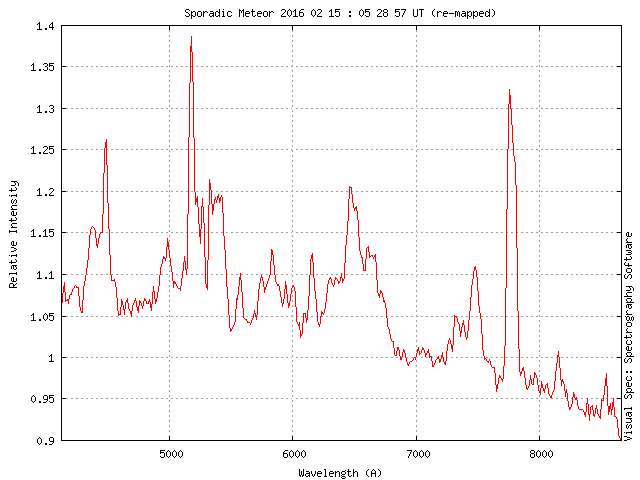
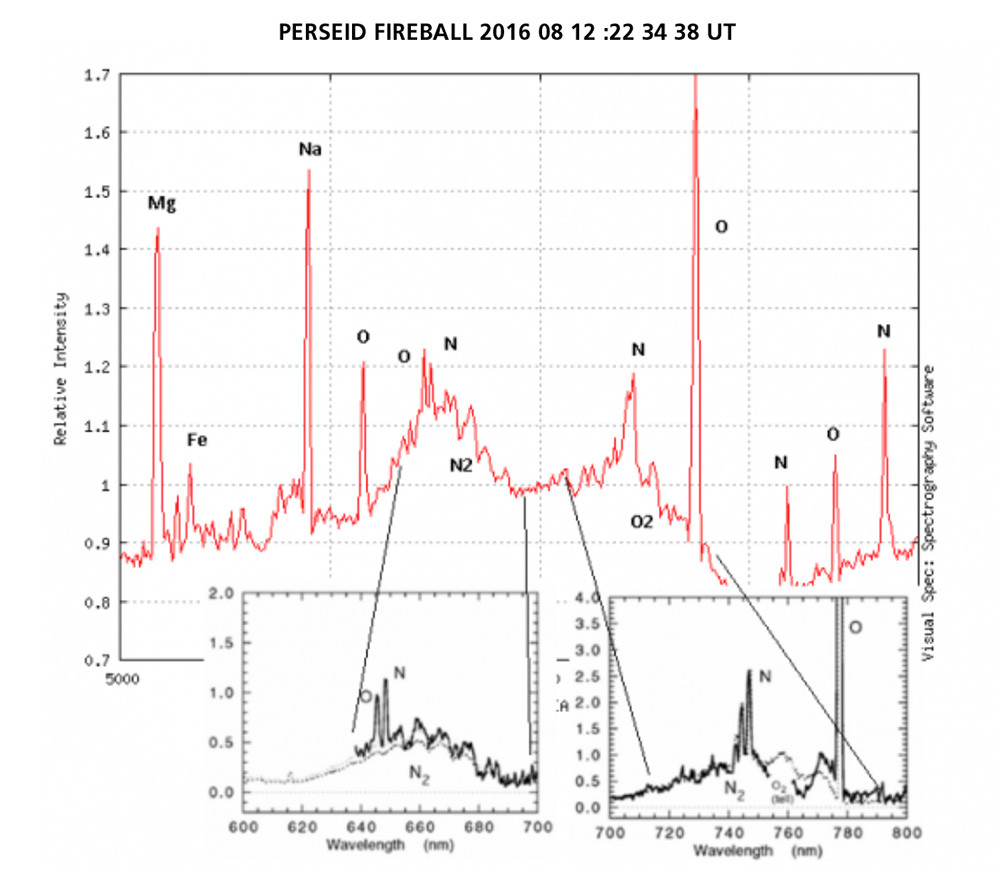
"Bits of stuff from different comets", when meteors, display subtly-different spectra.
Note how different is the iron meteor spectrum!:
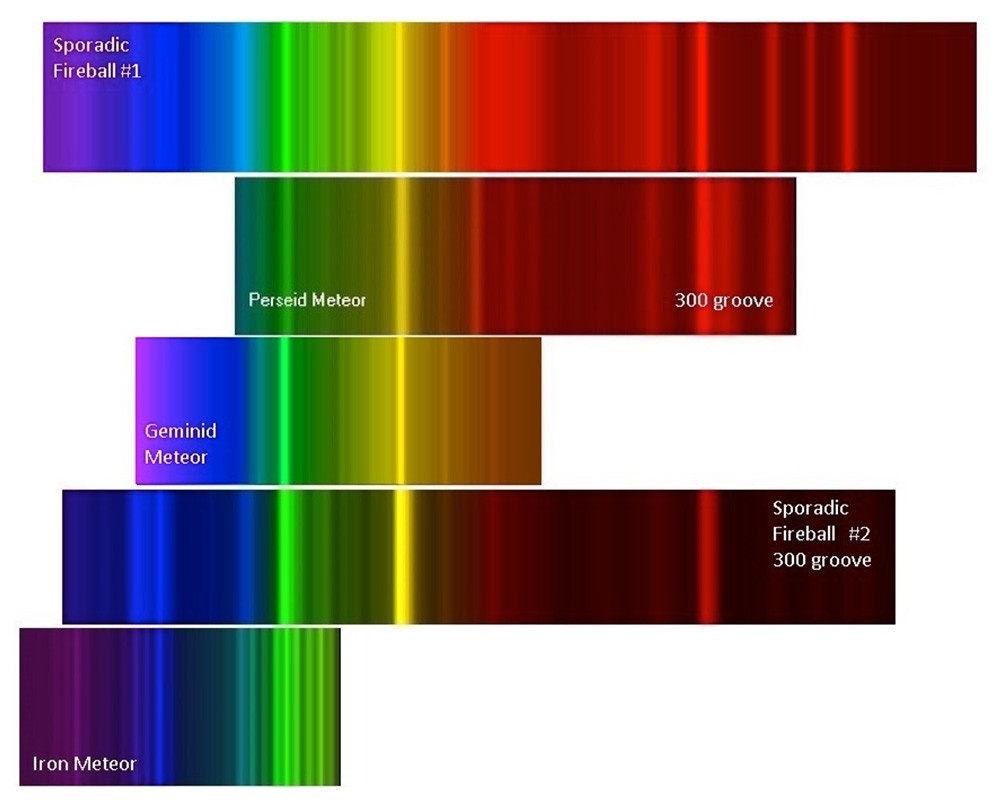
Common "rainbow glasses" acetate grating material (13,400 groove/inch or 550 lines/mm) is (sadly) provides several times too much dispersion. Better might be a 100 groove/mm glass transmission grating like this one:
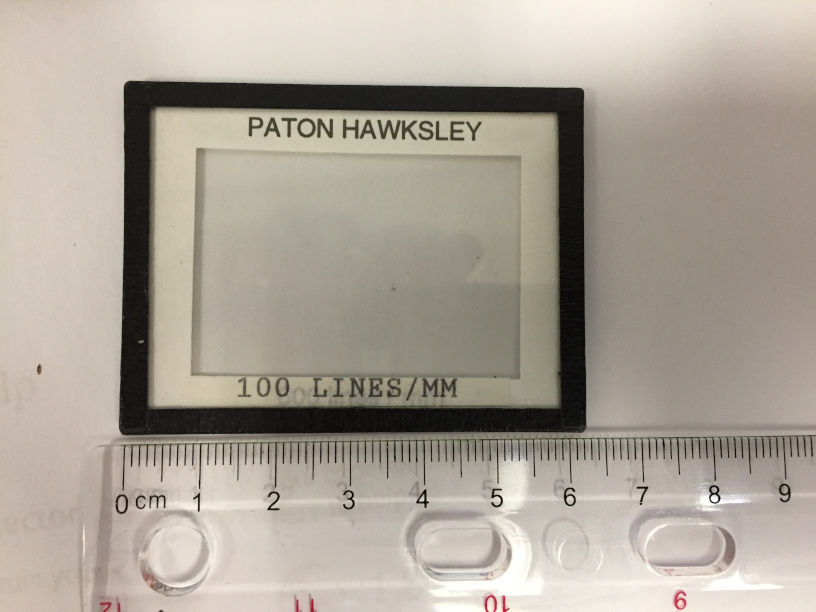
This is held in front of a common DSLR lens (say, 50mm focal length) with a filter holder (say).
The author quickly made up such an arrangement and "tried it out" last weekend (~9pm 17 Nov 2019). A Canon T2i (unmodified) with an EF 50mm f/1.8 lens (wide opened) had a thread-on 050mm-to-77mm aluminum ring "filter adapter" onto which had been mounted the pictured grating, attached and the camera was laid on its back (staring up at zenith) to take a 30 second exposure at ISO 1600.
The camera is oriented so that the dispersion will be along the north-south direction. In this way, star trails can be thought of as "slits" before sources in traditional, slitted spectroscopy.
First, the lens is focused. For the test, this was done hand-held by shooting some distant street lighting on the horizon (under the rising Moon); the lens is auto-focus. The autofocus was then turned off:
A zoom/crop shows that both the 0th order and dispersed spectra are in focus (at least, well-enough). Note that two of the streetlamp spectra are more-complex high-pressure sodium, and one is simple mercury vapour:
Taking the sky exposure next, this is the result:
On the RHS one will note the three stars people "climb" to locate the Andromeda Galaxy. The bottom (brightest) star is Mirach, beta-Andromeda, which is spectral class M0-III, an M supergiant.
Here's a map of the area to get oriented:
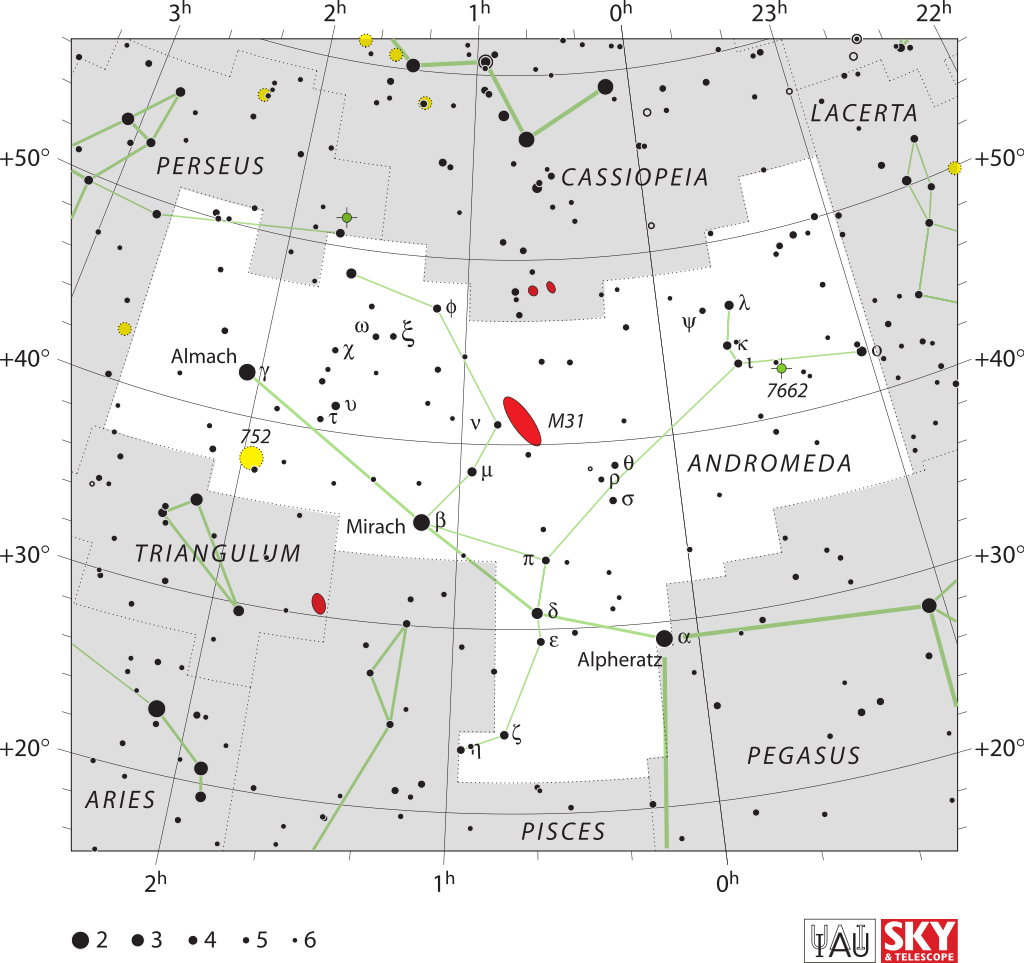
Here's a crop of the test, showing that there's a hint of the absorption features seen in M-III giant spectra:
This grating turns out to be well-blazed, and most of the dispersed light is put into the 1st order (here to the left of the 0th order image, which is now faint because there's not much light left in it)
(For reference, here's a graphic stolen from Wikipedia showing, at a glance, how absorption features vary with spectral type... here, for main sequence (non-giant) stars:)
_from_Pickles_1998.png)
Now all we need are some meteors to cross the field during a 30s exposure!
Maybe the Geminids in December?
-C